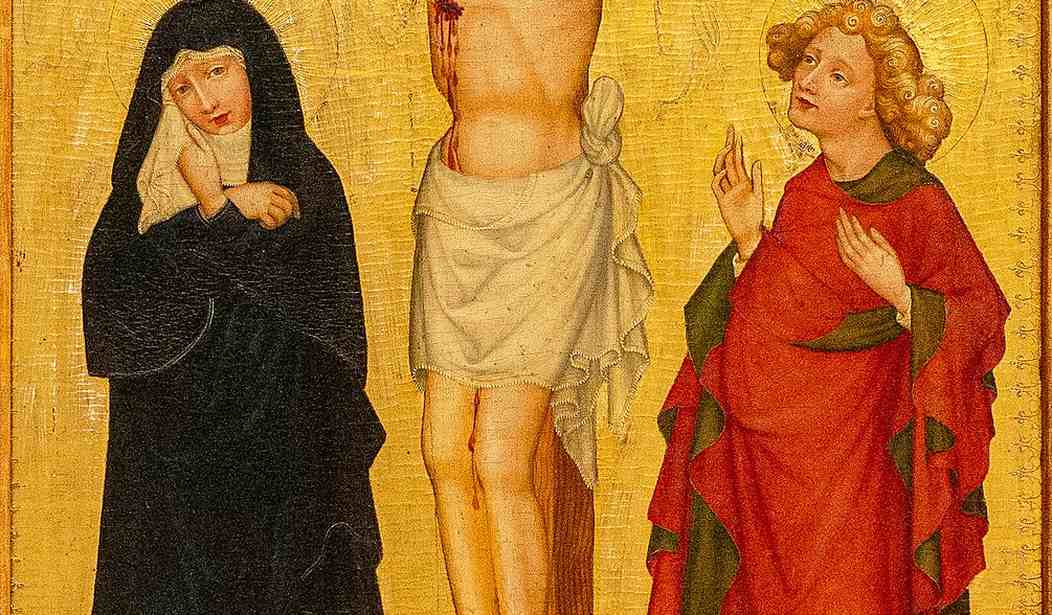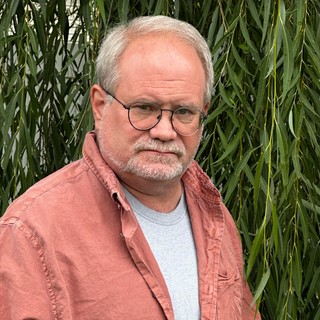Joshua Heath, a junior research fellow at Cambridge University in England, preached a sermon at an Evensong service this past Sunday. According to Fox News, Heath made the case that Christ’s body could be seen as a trans body. He said that non-erotic portrayals of Jesus’ genitalia in works of art should be used to create a welcoming voice for trans people, not a hostile one. Heath also displayed medieval paintings of the Crucifixion, showing Christ’s side being pierced by the spear. Heath noted that the wound had the appearance of a vagina and that the blood that issued from it flowed toward Christ’s groin. The sermon contained the phrase, “In Christ’s simultaneously masculine and feminine body in these works, if the body of Christ, as these works suggest, [is] the body of all bodies, then his body is also the trans body.”
While hostility has no place in the church, Heath was reaching to make his point. And it was a long stretch indeed. Many of those in attendance were offended, and some even left in tears while others shouted that Heath was committing heresy. One churchgoer wrote to Dr. Michael Banner, the dean of Trinity College, “I am contemptuous of the idea that by cutting a hole in a man, through which he can be penetrated, he can become a woman. I am especially contemptuous of such imagery when it is applied to our Lord, from the pulpit, at Evensong. I am contemptuous of the notion that we should be invited to contemplate the martyrdom of a ‘trans Christ,’ a new heresy for our age.” Banner has come to Heath’s defense, stating that Heath raised legitimate speculation about the nature of Christ. He has also maintained that perceiving Christ’s body as both male and female could help people think about transgender issues.
A spokesperson for Trinity College issued the following statement:
“Neither the dean of Trinity College nor the researcher giving the sermon suggested Jesus was transgender.
The sermon addressed the image of Christ depicted in art and various interpretations of those artistic portrayals. The sermon’s exploration of the nature of religious art, in the spirit of thought-provoking academic inquiry, was in keeping with open debate and dialogue at the University of Cambridge.”
On one side it is idolatry in its purest form — the act of forcing God into a vessel or image of one’s own choosing. Heath supports trans people, and so the effort must be made to see Christ through that lens. But at its core, the sermon was not even an act of misguided faith. Heath undoubtedly knew that his sermon would be controversial. Chances are good that he was depending on it. By preaching that sermon, Heath knew that he would scandalize the faithful, and endear himself to that section of society that is dedicated to the destruction of whatever remains of the status quo. He would enjoy that heady rush that comes with being a “pioneer” and a “rule breaker,” and as someone who had the courage to turn the Gospel on its head. He did it to generate social capital. He did it for himself. He is now enjoying his moment in the sun and is also able to nobly claim that he is being persecuted for his compassion if he wishes. He has indulged in his pride.
Similarly, Sunny Hostin, a co-host on The View, recently quipped that Jesus would be the grand marshal of a Pride parade. Biblically, Jesus was the grand marshal of one parade in his life, his entry into Jerusalem. And while that parade was triumphal in nature, Jesus was on his way to submit to humiliation, torture, and execution. There was no pride involved. In fact, by becoming human and offering up his own body, the Son of God was committing the ultimate act of service and sacrifice. But to meet Hostin’s expectations, the story and in fact, the person of Jesus must be rewritten to accommodate the whims of the day — and to satisfy personal and communal pride.
Related: ‘Tis the Season for the War on Christmas
This is an old heresy in new clothes. For years, we have sought to make God in our own image. From the name-it-and-claim-it doctrine of the Word of Faith Movement to the endorphin-filled worship services powered by pop music and special effects that are well-staged but short on content. From the Emergent Church to the philosophy of Jesus as a boyfriend. From the megachurches that have been used to fleece congregations and aggregate power for the leaders to the pockets of Christian Nationalism. From the mainline protestant churches that content themselves with the pursuit of social credit, even as their congregations dwindle to the sex scandals that have plagued the SBC, the Catholic Church, and other denominations. People have sought to define God in their terms, either individually or corporately, so as to be comfortable with whatever their life choices may be. Or at least justify them. Heath’s sermon is a natural result of a world that remains fixated on its own desires. And it is the result of faith that has abandoned the pursuit of God for the pursuit of culture. But the prohibition against the above-mentioned idolatry is meant to prevent that very thing. God will not and cannot be defined in human terms. It is not our privilege to bend God’s will to ours, but to bend our will to God’s. And that can be a difficult proposition for anyone.










Join the conversation as a VIP Member